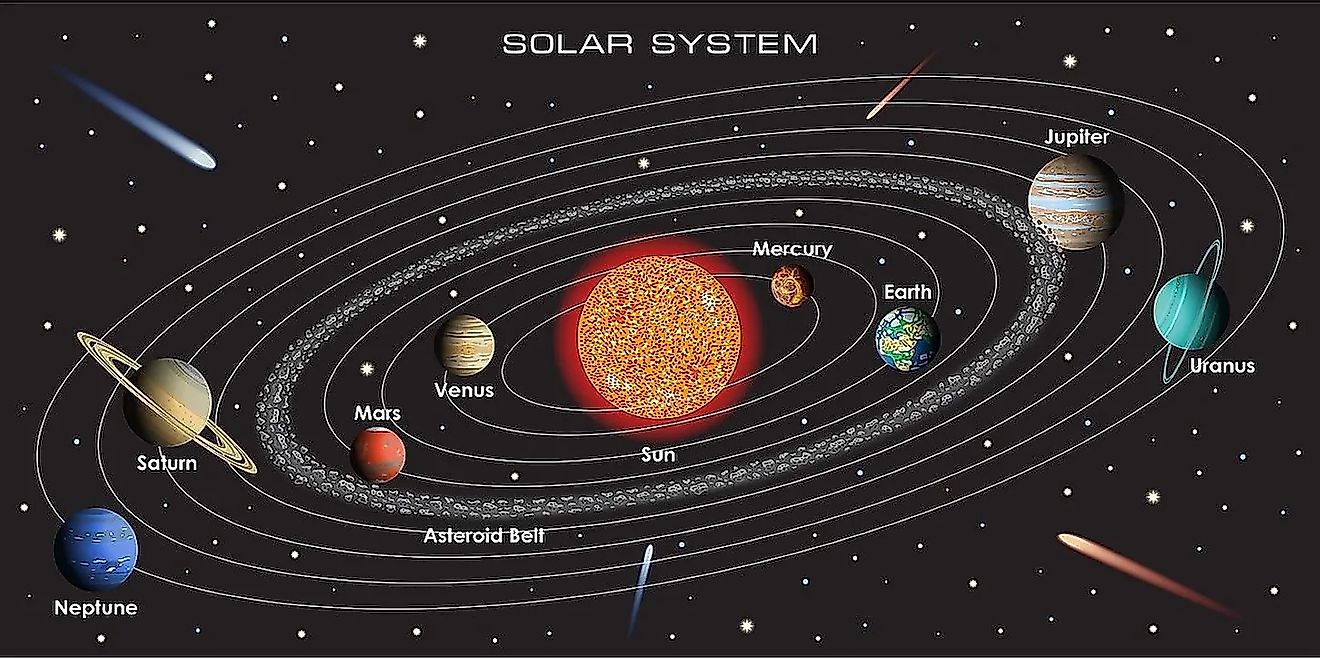
How Big Is Pluto?
Pluto was once classified as the smallest planet in our solar system, until it was reclassified as a dwarf planet in 2006. Regardless of what type of celestial object it is defined as, Pluto is still a very small world, especially when compared to the planets of our solar system. Pluto has a diameter of 1,473-miles (2,370-kilometres), which is even smaller than Earth’s moon, which has a diameter of 2,159-miles (3,475-kilometres). Pluto is only 18.5% the diameter of Earth and its surface area is only slightly larger than that of Russia, the largest country on Earth. The smallest planet in our solar system is Mercury, which has a diameter of 3,031-miles (4,879-kilometres), which makes Mercury about twice the size of Pluto.
Planet or Dwarf Planet?

The classification of Pluto is still widely debated among the public and some scientists. After all, Pluto was classified as the ninth planet of our solar system from its discovery in 1930 until 2006. If you went to school during that time period, you likely learned that Pluto was a planet. Interestingly, the reclassification of Pluto had less to do with Pluto itself and more to do with other objects that were being discovered. On January 5, 2005, astronomers announced the discovery of a minor planet called Eris, orbiting the sun in the distant Kuiper Belt at a distance even further than Pluto. When the size of Eris was calculated, estimates placed its diameter at around the same size as Pluto. Eris is now known to have a diameter of 1,445-miles (2,326-kilometres), which makes it only slightly smaller than Pluto. Astronomers debated whether or not Eris should also be classified as a planet, yet if it was, it meant that other dwarf planets should also be classified as planets. Rather than classifying all of these objects as planets, astronomers decided to finally define what a planet is. In order for an object to be a planet, it must meet three criteria. First, it must orbit the sun. Second, it must have a strong enough gravitational pull to become spherical. Third, it must have strong enough gravity to clear its orbit of debris. While all the dwarf planets of our solar system meet the first two criteria, they all fail to meet the third, and that includes Pluto. When this definition was given in 2006, it meant that Pluto would no longer be classified as a planet, and instead it was reclassified as a dwarf planet.
Mass and Gravity

Despite Pluto’s small size, it is still the largest known object that orbits the sun beyond Neptune. Pluto orbits the sun in a region known as the Kuiper Belt, which is a vast collection of comets, asteroids, and meteors left over from the formation of the solar system. While Pluto is the largest, most massive object beyond Neptune, it is still very small. Pluto’s mass is only 0.2% that of Earth and only 18% that of the moon. With such a small mass, Pluto’s gravity is also extremely weak. The surface gravity on Pluto is only 0.62-meters per second squared, while the surface gravity on Earth is 9.81-meters per second squared. Pluto’s surface gravity is only one-fifteenth that of Earth’s. An object that weighs 100-pounds on Earth will only weigh about 8-pounds on Pluto. Despite Pluto’s low mass and gravity, it still has a diverse system of moons. In total, Pluto has five known moons, which is larger than any of the rocky planets of the inner solar system.







